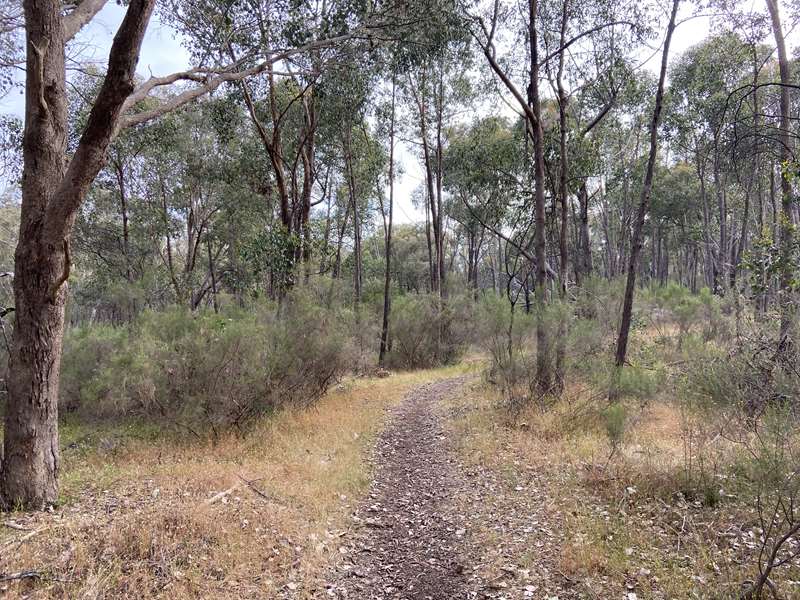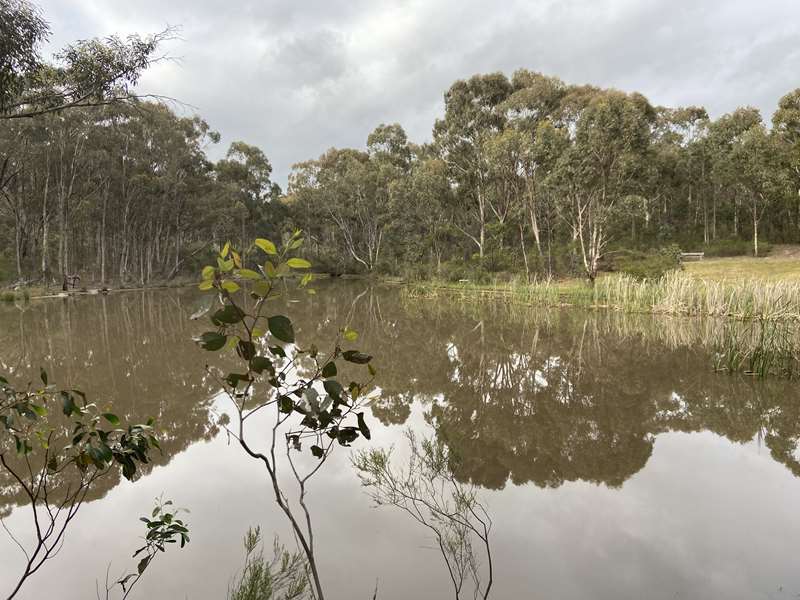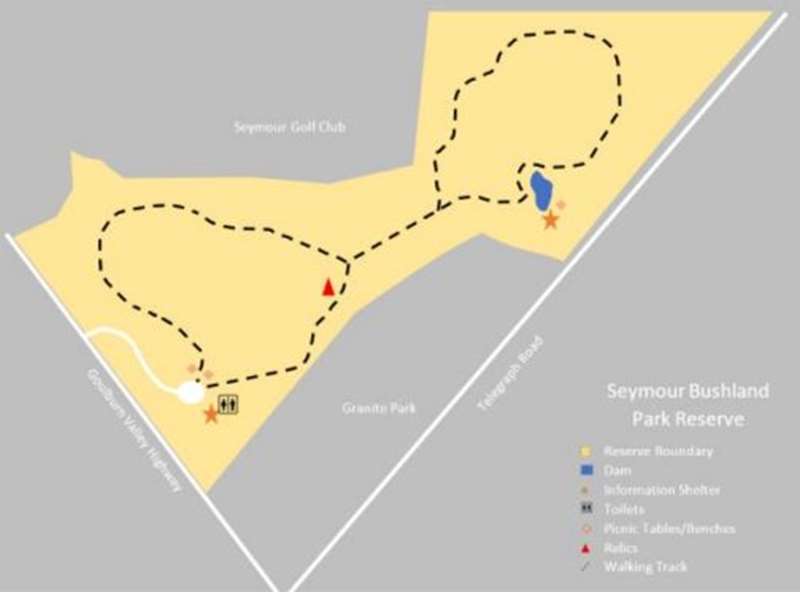Seymour Bushland Reserve


The 65.4 ha Seymour Bushland Park has high conservation significance, hosting Box-Ironbark Forest which is a threatened vegetation type and hosting a large number of threatened native fauna species, particularly birds.
Orchids and wildflowers have re-established on-site and are a highlight of this reserve during spring.
The reserve has historic relics, information shelter, tracks and trails including boardwalks, wildflower walks and picnic tables. There is a 3.3km walk around the reserve. A carpark that can be accessed off the Goulburn Valley Highway, Seymour.
What to do in the park
Experience the peace and tranquillity of the bush by taking a walk or having a picnic. The park has 3.3 kilometres of walking tracks. The short loop walk is 1.5 kilometres and will take approximately 25 minutes. The long loop walk is 2 kilometres and will take about 45 minutes.

Watch for wildlife and listen to their calls. The local birds and frogs provide a delightful bushland chorus. Enjoy the wildflowers, especially from August to November. Some to look for are
- Blue flowering Wax-lipped Orchids
- Golden Guinea Flowers (Hibbertias)
- Yellow Goodenias
- Blue Pincushions
- Pink or Yellow and cream Goldfields Grevillia (Grevillia alpina)
- Red Running Postmen
Map of Reserve:

History
The Taungurung People are the traditional custodians of the land.
The park was originally part of a 360 ha Kitchener Military Camp, used for military training from 1910 to the 1960s. Seymour Bushland Park was established as a reserve in 1978 to allow the natural environment to re-generate. Orchids and wildflowers have been re-established on-site and are a highlight of this reserve during spring.
Wildlife
The Seymour Bushland Park provides crucial bushland habitat to a number of threatened species listed under the Flora and Fauna Guarantee Act 1988, which includes: brush-tailed phascogale (Phascogale tapoatafa), endangered barking owl (Ninox connivens) and squirrel glider (Petaurus norfolcensis).
The park is also an ideal site for birdwatching, providing habitat to a large number of native birds. These include: painted button-quail (Turnix various), whistling kite (Haliastur sphenurus) and brown treecreeper (Climacteris picumnus).
Flora
Whilst the site was highly disturbed in the past, the natural bushland of the park has been regenerating since 1978. Continuous regeneration will allow for the development of large, hollow-bearing trees, providing habitat for the mammals and birds in the park and greater diversity in understorey vegetation.
Several eucalypti make up the overstorey across the park, including grey box (Eucalyptus macrocarpa), red box (Eucalyptus polyanthemos), red stringybark (Eucalyptus macrorhyncha) and river red gums (Eucalyptus camaldulensis).
The understorey consists of native shrubs such as drooping cassinia (Cassinia arcuate), hedge wattle (Acacia paradox) and sweet bursaria (Bursaria spinosa). Native lilies and grasses are re-establishing within the park and are a highlight of this reserve during spring.
Access for Dogs:
To protect the wildlife, dogs must be kept on a leash in the Park at all times.
Review:
It is well worth a visit. A short gravel road leads in from the highway (which has a sign) to a parking area with information board and three unshaded tables / seats. There's a direction sign to the walking tracks.
There is a choice of a short loop (1.5 km) or a long loop (3 km) walk. Both loops start from the same place and there are arrows indicating the tracks (blue arrow for the short loop and red arrow for the long loop). If you have time we would definitely suggest taking the long route because it's a much more interesting and varied walk.
The walk goes through light bushland and there are seats to rest on along the way. After you pass the remnants of some buildings, the path splits between the short loop and the long loop.
In spring there were lots of wildflowers with a yellow colour scheme. We saw some kangaroos in the bush and there was plenty of birdlife.
The trails are very well maintained and well signposted and it's unlikely you're going to get lost. There are boardwalks over areas where water can flow after rain.
The bushland is well sheltered from the surrounding properties and you do get a feeling of seclusion.
Photos:
Location
9088 Goulburn Valley Highway, Seymour 3660 Map
Web Links
→ Know your Reserve - Seymour Bushland Park (PDF)
→ Seymour Bushland Park (Walking Maps)











